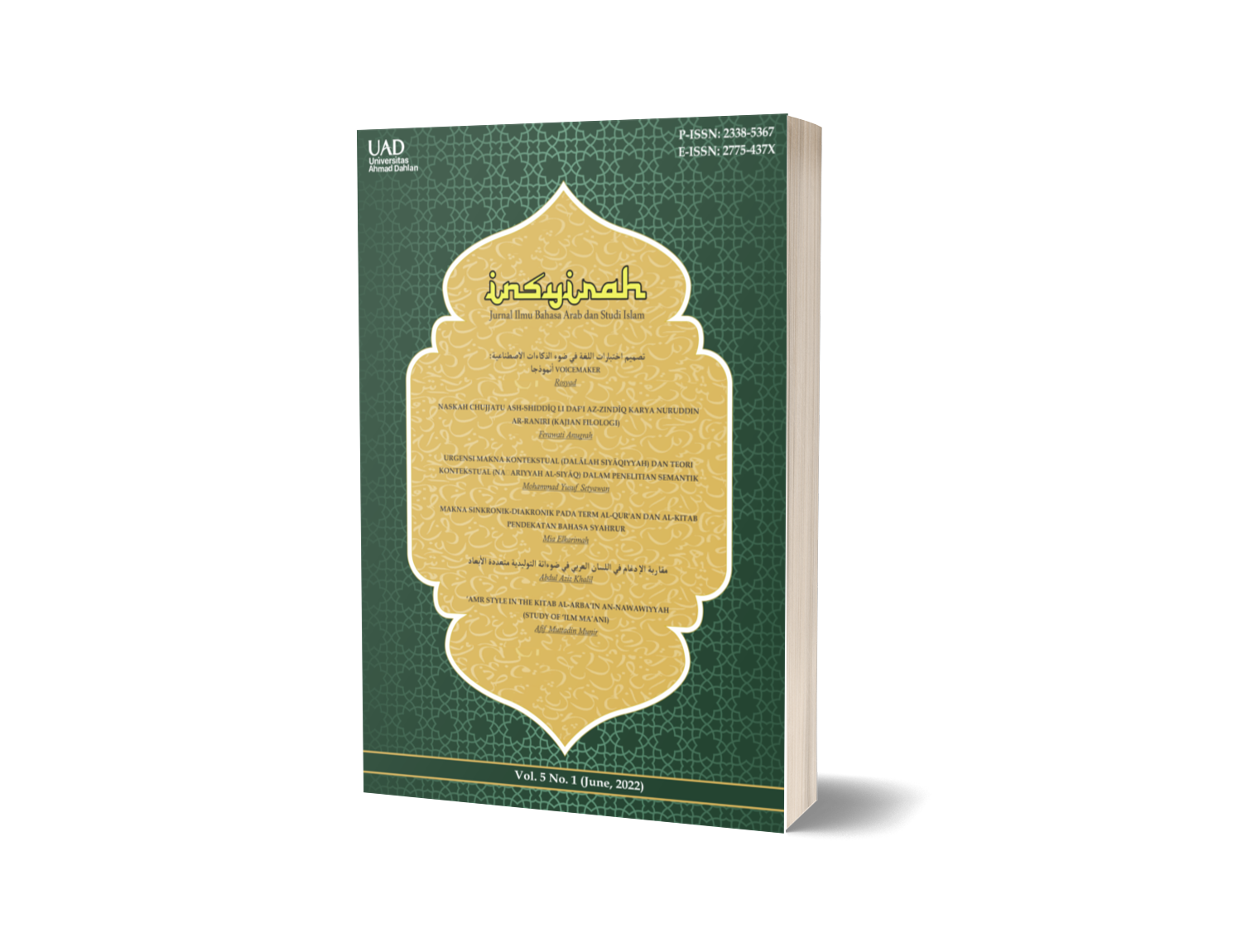Egyptian Revolution Visualization in Arabic Song Syuhada 25 Yanayer and Sout El Horreya
DOI:
https://doi.org/10.26555/insyirah.v6i1.6735Keywords:
Egyptian Revolution, Arab Spring, TsaurahAbstract
This study presents a description of the visual depiction of the revolutionary process, or Tsaurah which is shown in the song clips of Syuhada 25 Yanayer and Sout El Horreya. By using semiotic theory Roland Barthes is able to interpret the signs seen in the clips of the two songs. Details about the Tsaurah incident can be known and examined after watching and analyzing every piece of the video clips of the revolutionary songs. The description of the struggle of the Egyptian people can be seen from two different sides in these two research objects; he looks full of sadness when he sees the visual for the song Syuhada 25 Yanayer, and he looks full of happiness when he sees the clip for the song Sout El Horreya. The study used in this research is descriptive qualitative type. The collection of data in this paper was done by observing and noting. The results of the study show that the two song clips that are the object of study are able to visually depict the conditions during the Revolution in Egypt.
References
Abed al-Jabri, M. (2009). تكوين العقل العربي.. Beirut : Markaz Dirasat Wahdah Arabiyyah
Ali, M. (2014). Memahami Riset Perilaku dan Sosial. Jakarta : Bumi Aksara
Alin, H. H. (2016). Kondisi Mesir tahun 2011-2012 dan Reaksi Dunia Pasca Runtuhnya Rezim Mubarak Karena Revolusi Mesir 2011. Jurnal Analisis Hubungan Internasional.
Apriasari, Hartini, Khairu R. Sobandi, and S. F. (2013). Demokratisasi di Mesir: Resistensi Masyarakat Mesir melalui media sosial dan kejatuhan rezim Hosni Mubarok. Jurnal Ilmu Politik dan Pemerintahan, 1(3), 261–277. https://doi.org/https://doi.org/10.37058/jipp.v1i3.2275
Bonar, S. K. (1981). Hubungan Masyarakat Modern. Jakarta : Bina Aksara
Burdah, I. (2013). Menuju Dunia Baru Arab. Yogyakarta : Tiara Wacana
Juned, M., Maliki, M., & Asrudin, M. (2015). Kekuatan Politik Media Sosial: Uji Kasus pada Revolusi Mesir 2011. Global: Jurnal Politik Internasional. https://doi.org/10.7454/global.v15i1.20
Kurniawan. (2001). Semiologi Rolland Barthes. Magelang : Tera
Manan, P. R. (2020). People Power Dalam Suksesi Kepemimpinan Di Mesir. WANUA: Jurnal Hubungan Internasional.
Miladi., N. (2016). Social Media and Social Change. Jurnal Domes(Digest of middle East Studies), 25(1), 39.
Piliang, Yasraf Amir, T. Christomy, and U. Y. (2010). Semiotika sebagai Metode dalam penelitian Desain Semiotika Budaya.
Raco, J. R. (2010). Metode penelitian kualitatif Jakarta. Jakarta: PT Gramedia Widiasarana
Rofiq, A. A. (2016). Melacak Dinamika Sipil-Militer Pasca Revolusi Mesir. SALAM: Jurnal Sosial dan Budaya Syar-i. https://doi.org/10.15408/sjsbs.v2i1.2244
Samsir, & Basyar, M. H. (2021). Kegagalan Demokratisasi Di Mesir Pasca-Arab Spring. Jurnal Penelitian Politik.
Taufik, T. (2018). Penumbangan Rezim melalui Gerakan Masyarakat Dunia Maya (Media Sosial) di Timur Tengah. Indonesian Journal of International Relations. https://doi.org/10.32787/ijir.v2i2.55
الذوادي, and م. (2014). الربيع العربي في ميزان نظرية الدومينو الثقافي. Journal of the Social Sciences, 42(3)
Downloads
Published
Issue
Section
License
Copyright (c) 2023 Muhammad Bakhrul Ilmi

This work is licensed under a Creative Commons Attribution-ShareAlike 4.0 International License.








